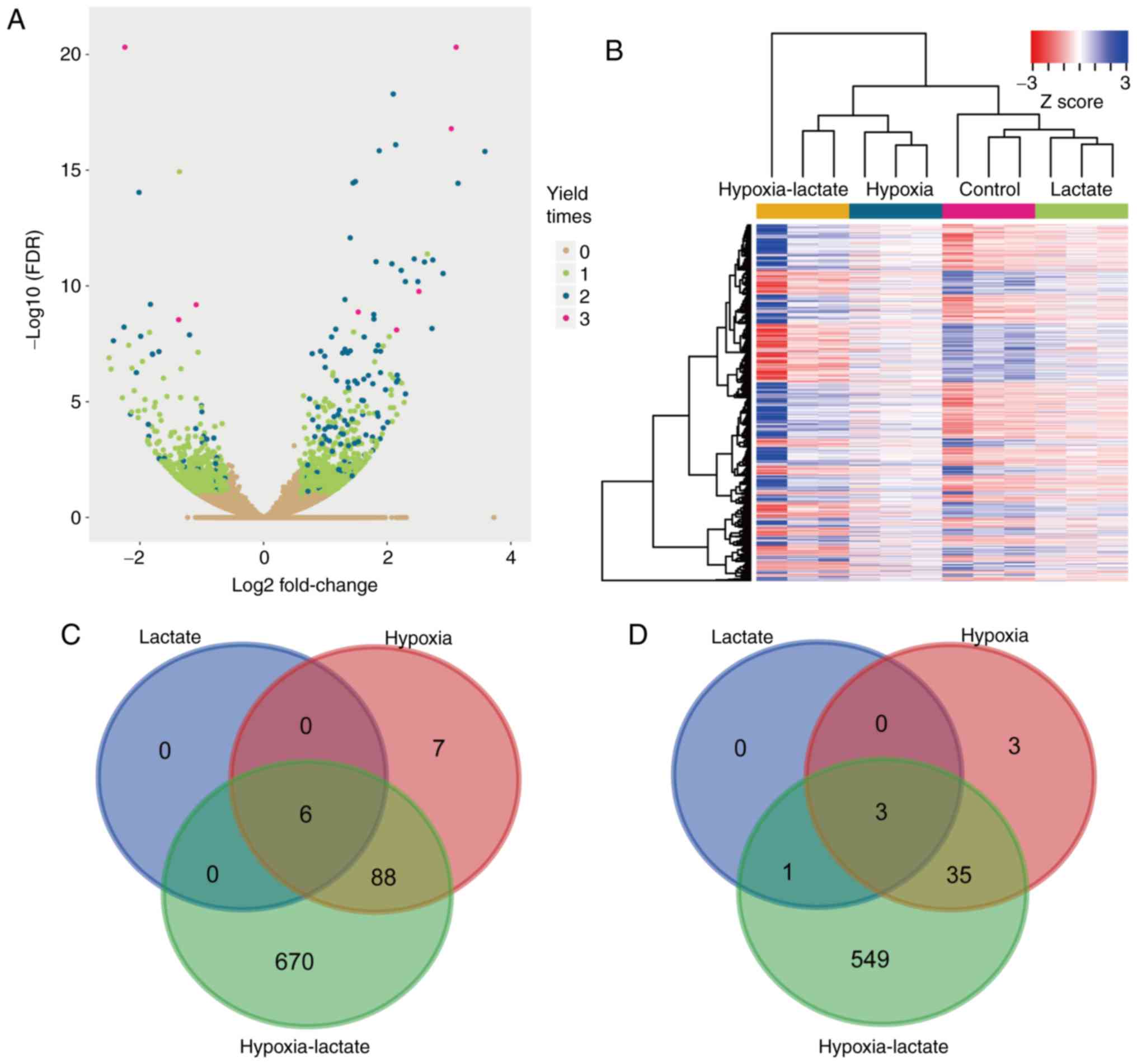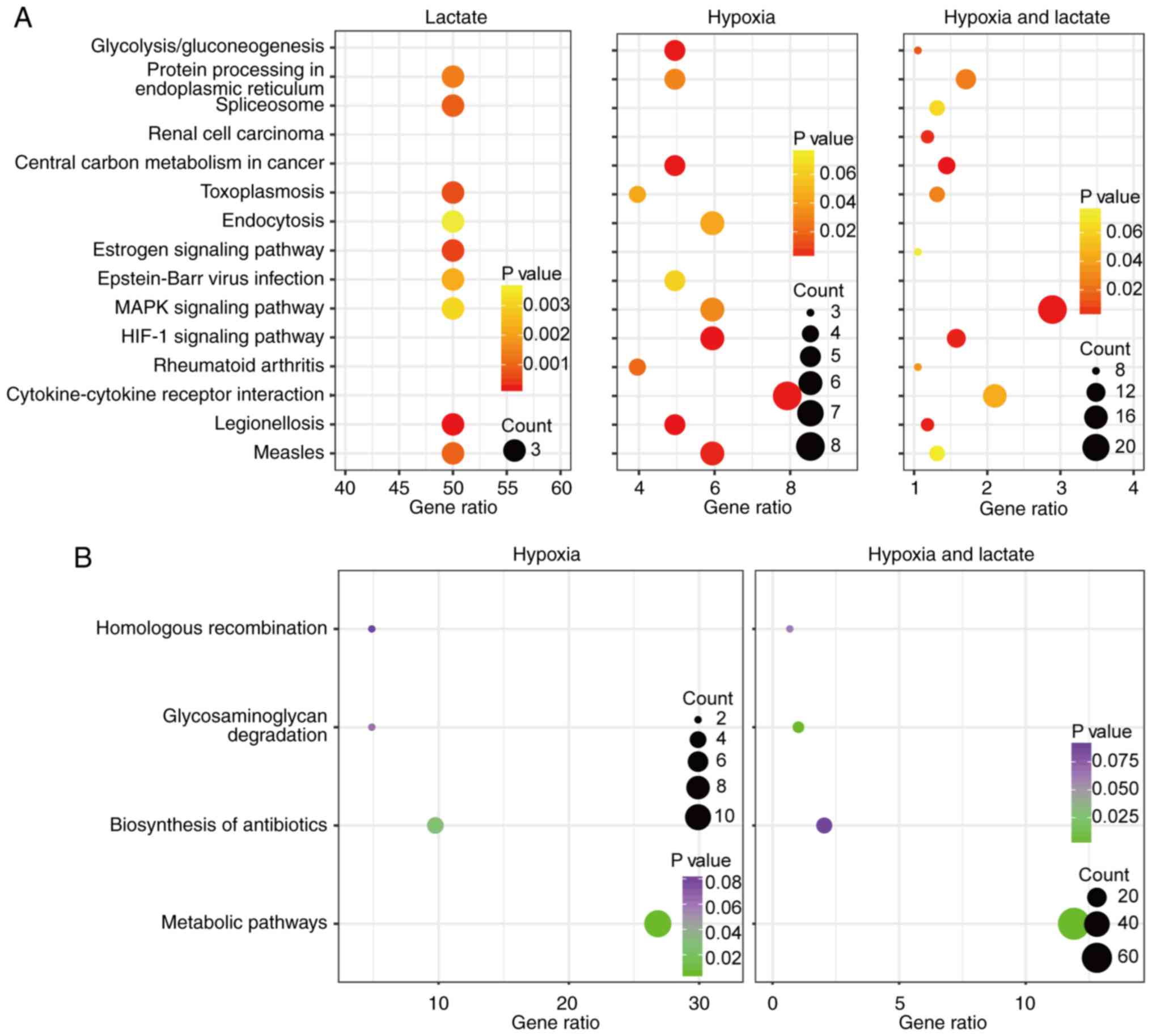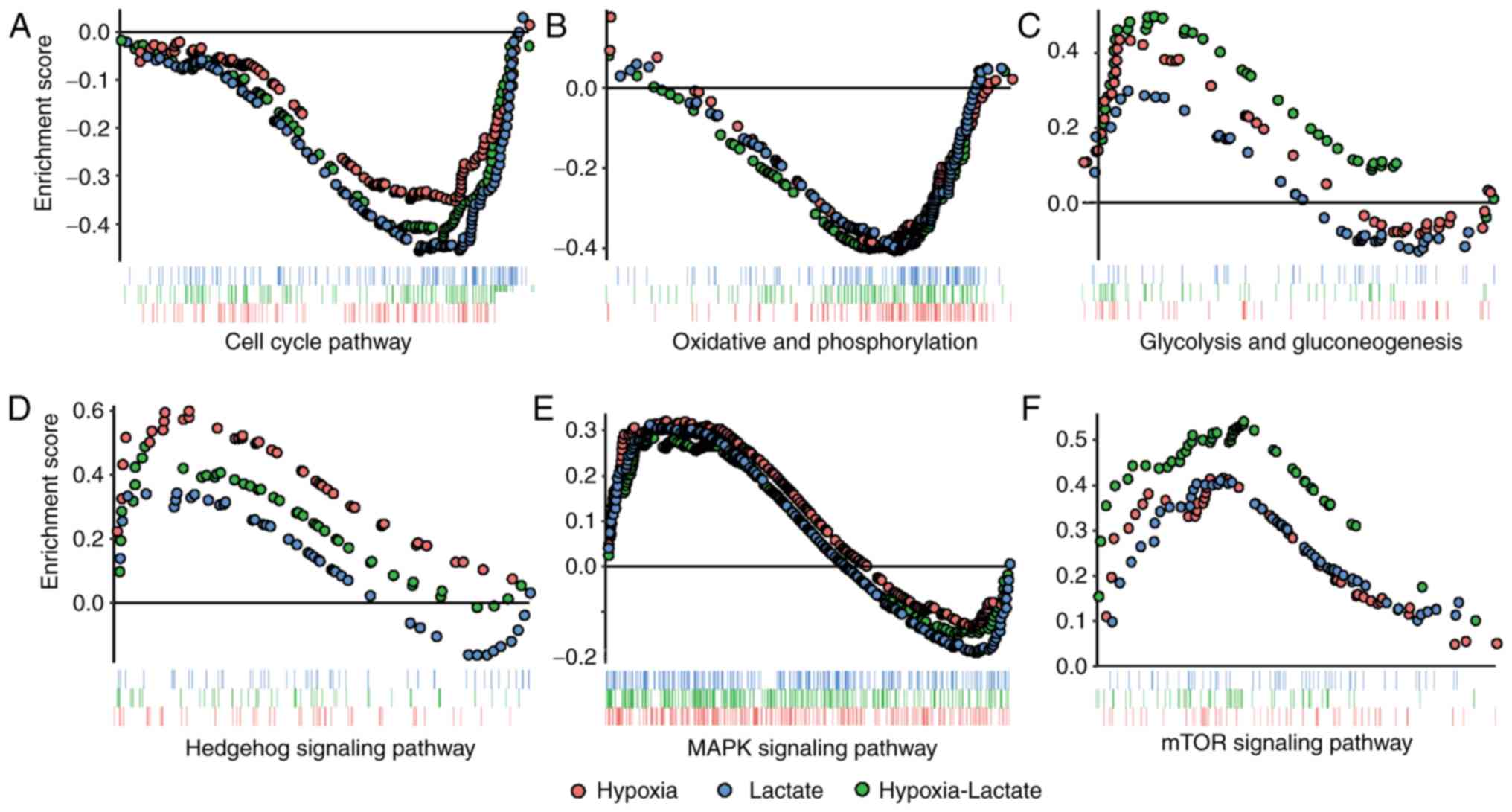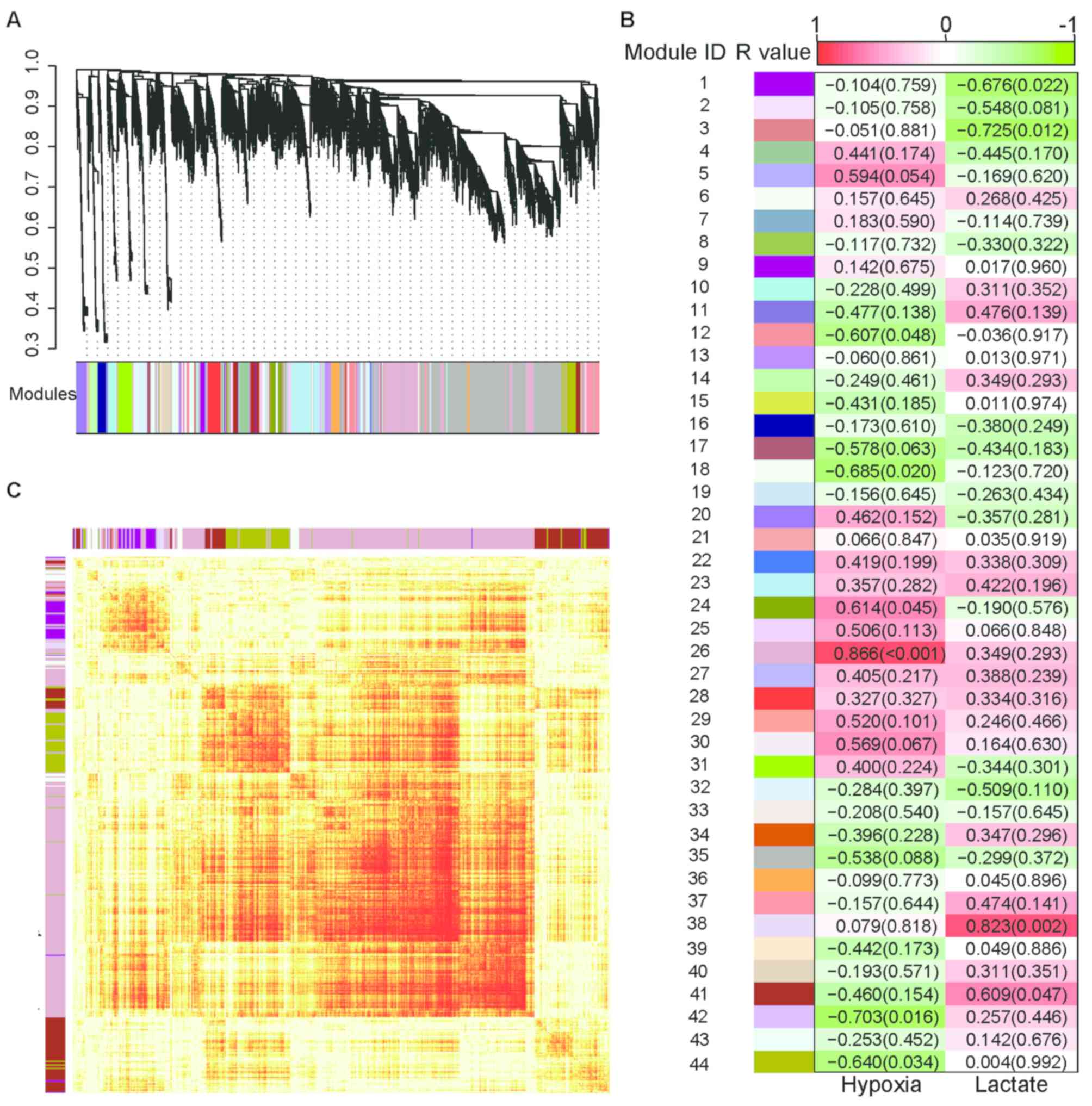|
1
|
Hanahan D and Weinberg RA: Hallmarks of
cancer: The next generation. Cell. 144:646–674. 2011. View Article : Google Scholar : PubMed/NCBI
|
|
2
|
Hsu PP and Sabatini DM: Cancer cell
metabolism: Warburg and beyond. Cell. 134:703–707. 2008. View Article : Google Scholar : PubMed/NCBI
|
|
3
|
Koppenol WH, Bounds PL and Dang CV: Otto
Warburg's contributions to current concepts of cancer metabolism.
Nat Rev Cancer. 11:325–337. 2011. View
Article : Google Scholar : PubMed/NCBI
|
|
4
|
Nurwidya F, Takahashi F, Minakata K,
Murakami A and Takahashi K: From tumor hypoxia to cancer
progression: The implications of hypoxia-inducible factor-1
expression in cancers. Anat Cell Biol. 45:73–78. 2012. View Article : Google Scholar : PubMed/NCBI
|
|
5
|
Ganapathy-Kanniappan S and Geschwind JF:
Tumor glycolysis as a target for cancer therapy: Progress and
prospects. Mol Cancer. 12:1522013. View Article : Google Scholar : PubMed/NCBI
|
|
6
|
Carmona-Fontaine C, Deforet M, Akkari L,
Thompson CB, Joyce JA and Xavier JB: Metabolic origins of spatial
organization in the tumor microenvironment. Proc Natl Acad Sci USA.
114:2934–2939. 2017. View Article : Google Scholar : PubMed/NCBI
|
|
7
|
Eruslanov E, Neuberger M, Daurkin I,
Perrin GQ, Algood C, Dahm P, Rosser C, Vieweg J, Gilbert SM and
Kusmartsev S: Circulating and tumor-infiltrating myeloid cell
subsets in patients with bladder cancer. Int J Cancer.
130:1109–1119. 2012. View Article : Google Scholar : PubMed/NCBI
|
|
8
|
Zhao Y, Wang D, Xu T, Liu P, Cao Y, Wang
Y, Yang X, Xu X, Wang X and Niu H: Bladder cancer cells re-educate
TAMs through lactate shuttling in the microfluidic cancer
microenvironment. Oncotarget. 6:39196–39210. 2015. View Article : Google Scholar : PubMed/NCBI
|
|
9
|
Love MI, Huber W and Anders S: Moderated
estimation of fold change and dispersion for RNA-seq data with
DESeq2. Genome Biol. 15:5502014. View Article : Google Scholar : PubMed/NCBI
|
|
10
|
Liang B, Li C and Zhao J: Identification
of key pathways and genes in colorectal cancer using bioinformatics
analysis. Med Oncol. 33:1112016. View Article : Google Scholar : PubMed/NCBI
|
|
11
|
Wickham H: ggplot2: Elegant graphics for
data analysis. 2009.
|
|
12
|
Subramanian A, Tamayo P, Mootha VK,
Mukherjee S, Ebert BL, Gillette MA, Paulovich A, Pomeroy SL, Golub
TR, Lander ES and Mesirov JP: Gene set enrichment analysis: A
knowledge-based approach for interpreting genome-wide expression
profiles. Proc Natl Acad Sci USA. 102:15545–15550. 2005. View Article : Google Scholar : PubMed/NCBI
|
|
13
|
Malyshev I and Malyshev Y: Current concept
and update of the macrophage plasticity concept: Intracellular
mechanisms of reprogramming and M3 macrophage ‘Switch’ phenotype.
Biomed Res Int. 2015:3413082015. View Article : Google Scholar : PubMed/NCBI
|
|
14
|
Mantovani A, Marchesi F, Malesci A, Laghi
L and Allavena P: Tumour-associated macrophages as treatment
targets in oncology. Nat Rev Clin Oncol. 14:399–416. 2017.
View Article : Google Scholar : PubMed/NCBI
|
|
15
|
Nielsen SR and Schmid MC: Macrophages as
key drivers of cancer progression and metastasis. Mediators
Inflamm. 2017:96247602017. View Article : Google Scholar : PubMed/NCBI
|
|
16
|
Noman MZ, Hasmim M, Messai Y, Terry S,
Kieda C, Janji B and Chouaib S: Hypoxia: A key player in antitumor
immune response. A Review in the Theme: Cellular responses to
hypoxia. Am J Physiol Cell Physiol. 309:C569–C579. 2015. View Article : Google Scholar : PubMed/NCBI
|
|
17
|
Colegio OR, Chu NQ, Szabo AL, Chu T,
Rhebergen AM, Jairam V, Cyrus N, Brokowski CE, Eisenbarth SC,
Phillips GM, et al: Functional polarization of tumour-associated
macrophages by tumour-derived lactic acid. Nature. 513:559–563.
2014. View Article : Google Scholar : PubMed/NCBI
|
|
18
|
Hoque R, Farooq A, Ghani A, Gorelick F and
Mehal WZ: Lactate reduces liver and pancreatic injury in Toll-like
receptor- and inflammasome-mediated inflammation via GPR81-mediated
suppression of innate immunity. Gastroenterology. 146:1763–1774.
2014. View Article : Google Scholar : PubMed/NCBI
|
|
19
|
Errea A, Cayet D, Marchetti P, Tang C,
Kluza J, Offermanns S, Sirard JC and Rumbo M: Lactate inhibits the
Pro-inflammatory response and metabolic reprogramming in murine
macrophages in a GPR81-independent manner. PLoS One.
11:e01636942016. View Article : Google Scholar : PubMed/NCBI
|
|
20
|
Iraporda C, Romanin DE, Bengoa AA, Errea
AJ, Cayet D, Foligné B, Sirard JC, Garrote GL, Abraham AG and Rumbo
M: Local treatment with lactate prevents intestinal inflammation in
the TNBS-induced colitis model. Front Immunol. 7:6512016.
View Article : Google Scholar : PubMed/NCBI
|
|
21
|
Pereira TA, Xie G, Choi SS, Syn WK, Voieta
I, Lu J, Chan IS, Swiderska M, Amaral KB, Antunes CM, et al:
Macrophage-derived Hedgehog ligands promotes fibrogenic and
angiogenic responses in human schistosomiasis mansoni. Liver Int.
33:149–161. 2013. View Article : Google Scholar : PubMed/NCBI
|
|
22
|
Karnam A, Holla S and Balaji KN: Sonic
hedgehog-responsive lipoxygenases and cyclooxygenase-2 modulate
Dectin-1-induced inflammatory cytokines. Mol Immunol. 68:280–289.
2015. View Article : Google Scholar : PubMed/NCBI
|
|
23
|
Yang Y, Kim SC, Yu T, Yi YS, Rhee MH, Sung
GH, Yoo BC and Cho JY: Functional roles of p38 mitogen-activated
protein kinase in macrophage-mediated inflammatory responses.
Mediators Inflamm. 2014:3523712014. View Article : Google Scholar : PubMed/NCBI
|
|
24
|
Lavin Y, Kobayashi S, Leader A, Amir ED,
Elefant N, Bigenwald C, Remark R, Sweeney R, Becker CD, Levine JH,
et al: Innate immune landscape in early lung adenocarcinoma by
paired single-cell analyses. Cell. 169:750–765.e17. 2017.
View Article : Google Scholar : PubMed/NCBI
|
|
25
|
Carmona-Fontaine C, Bucci V, Akkari L,
Deforet M, Joyce JA and Xavier JB: Emergence of spatial structure
in the tumor microenvironment due to the Warburg effect. Proc Natl
Acad Sci USA. 110:19402–19407. 2013. View Article : Google Scholar : PubMed/NCBI
|
|
26
|
Jenkins SJ, Ruckerl D, Cook PC, Jones LH,
Finkelman FD, van Rooijen N, MacDonald AS and Allen JE: Local
macrophage proliferation, rather than recruitment from the blood,
is a signature of TH2 inflammation. Science. 332:1284–1288. 2011.
View Article : Google Scholar : PubMed/NCBI
|
|
27
|
Roiniotis J, Dinh H, Masendycz P, Turner
A, Elsegood CL, Scholz GM and Hamilton JA: Hypoxia prolongs
monocyte/macrophage survival and enhanced glycolysis is associated
with their maturation under aerobic conditions. J Immunol.
182:7974–7981. 2009. View Article : Google Scholar : PubMed/NCBI
|
|
28
|
Durnova GN, Kaplanskii AS and Portugalov
VV: The effect of hypoxia on the function and metabolism of
alveolar macrophages. Biull Eksp Biol Med. 79:113–115. 1975.(In
Russian). View Article : Google Scholar : PubMed/NCBI
|


















